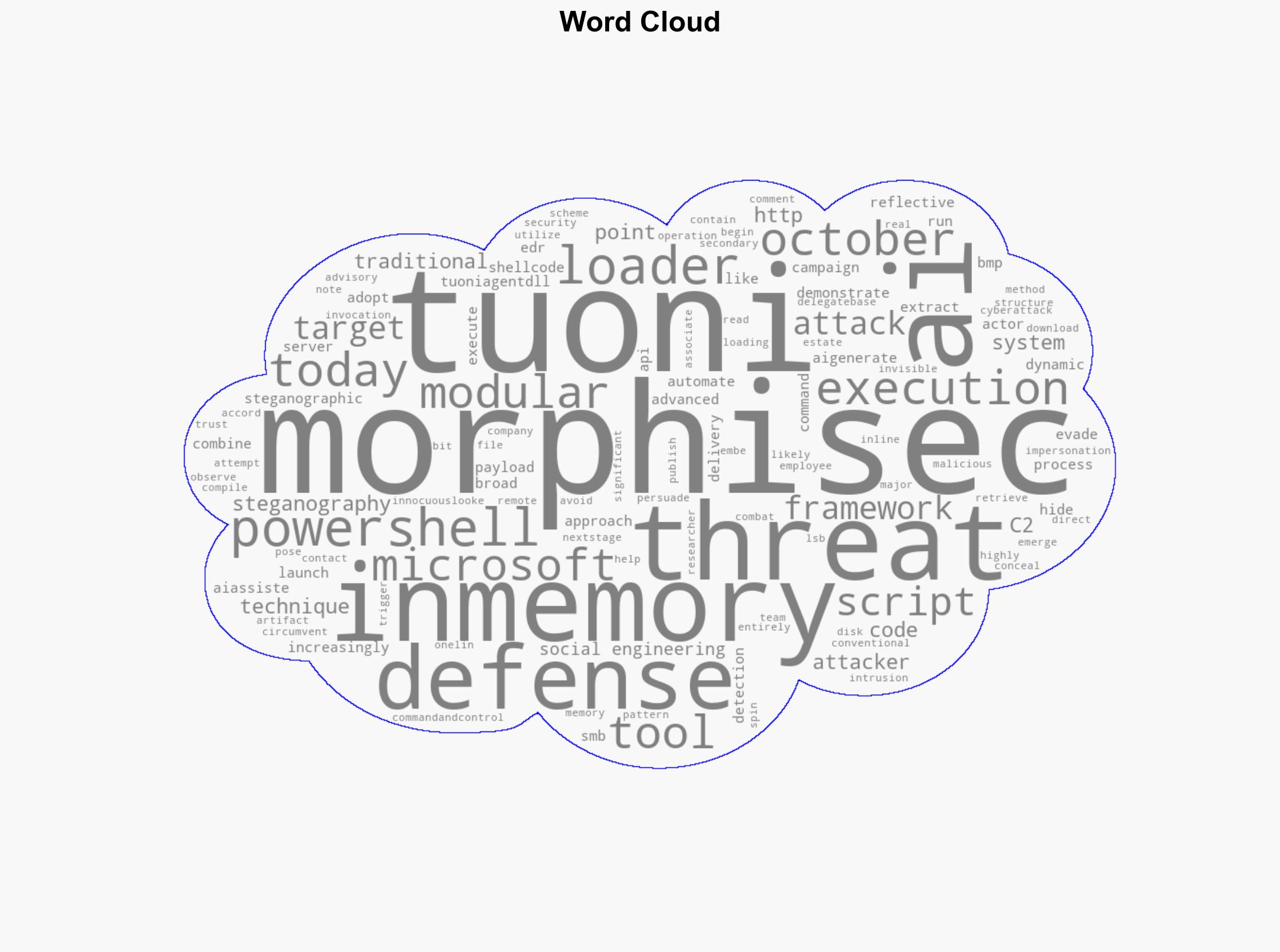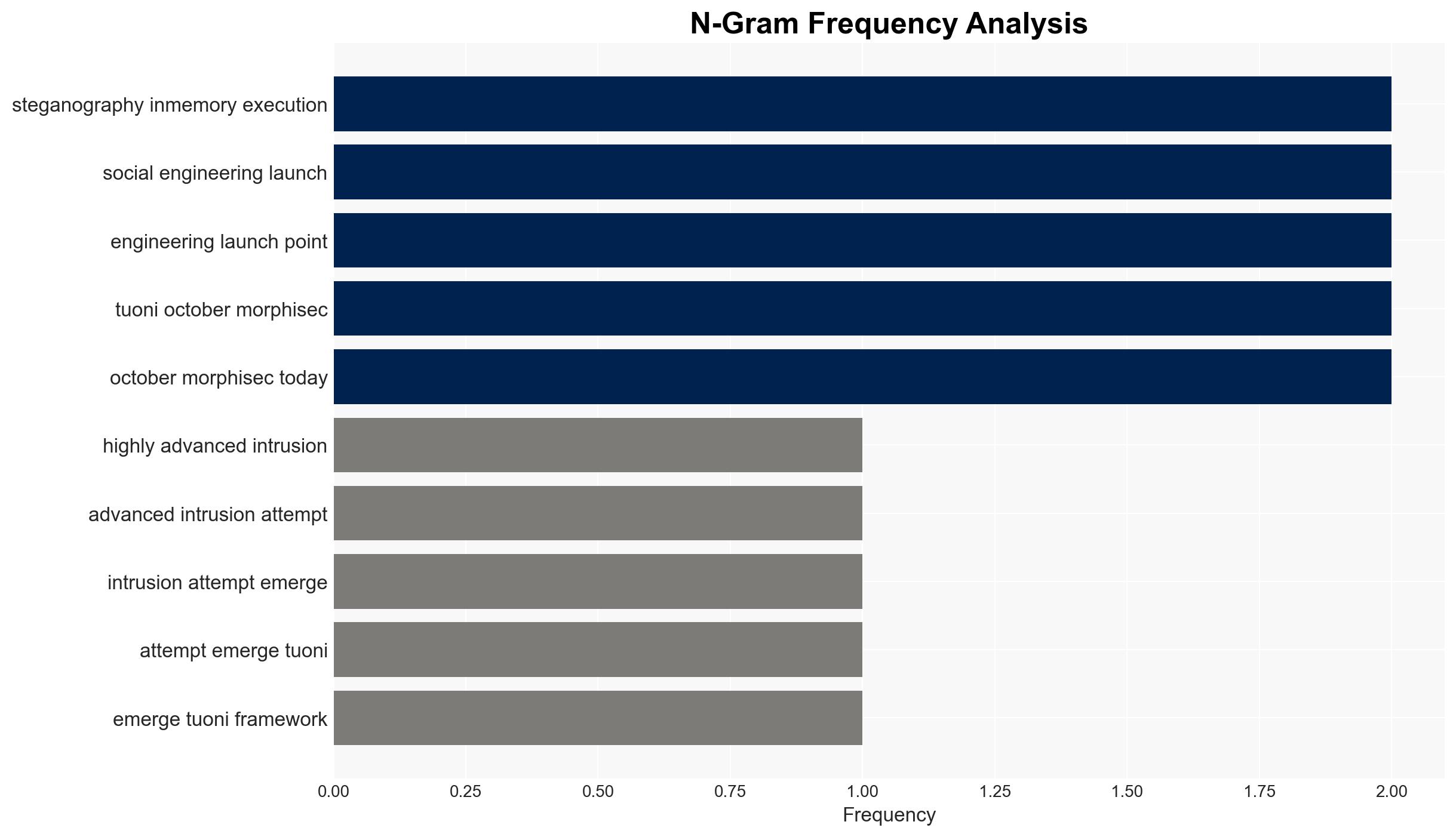AI-Enhanced Tuoni Framework Targets Major US Real Estate Firm – Infosecurity Magazine
Published on: 2025-11-18
AI-powered OSINT brief from verified open sources. Automated NLP signal extraction with human verification. See our Methodology and Why WorldWideWatchers.
Intelligence Report: AI-Enhanced Tuoni Framework Targets Major US Real Estate Firm
1. BLUF (Bottom Line Up Front)
The Tuoni framework, leveraging AI-enhanced techniques, represents a significant threat to traditional cybersecurity defenses, particularly in the real estate sector. The most supported hypothesis is that the attack is part of a broader trend of sophisticated cyber operations targeting critical industries using advanced methods to evade detection. It is recommended that firms adopt a prevention-first strategy with advanced threat detection and response capabilities. Confidence Level: Moderate.
2. Competing Hypotheses
Hypothesis 1: The attack is an isolated incident targeting a specific real estate firm due to its high-value data and assets, using the Tuoni framework to exploit specific vulnerabilities.
Hypothesis 2: The attack is part of a broader campaign targeting multiple industries, with the real estate firm being one of many targets, indicating a shift in cybercriminal focus towards high-value sectors using AI-enhanced techniques.
Assessment: Hypothesis 2 is more likely given the sophistication of the attack and the use of advanced techniques like AI, steganography, and in-memory execution, which suggest a strategic and scalable approach rather than a targeted, isolated incident.
3. Key Assumptions and Red Flags
Assumptions: The attackers have significant resources and expertise in AI and cybersecurity. The real estate firm was targeted due to its perceived vulnerability or value.
Red Flags: The use of AI-generated code and steganography indicates potential state-sponsored involvement or highly organized cybercriminal groups. The lack of traditional indicators suggests a high level of operational security and sophistication.
4. Implications and Strategic Risks
The attack highlights a growing trend of AI-enhanced cyber threats that can bypass conventional defenses, posing risks not only to the real estate sector but also to other critical industries. Potential cascading threats include economic disruptions, loss of sensitive data, and erosion of trust in digital infrastructures. Escalation scenarios could involve increased cyber espionage, financial fraud, and potential geopolitical tensions if state actors are involved.
5. Recommendations and Outlook
- Implement advanced threat detection systems capable of identifying AI-enhanced and in-memory attacks.
- Adopt a prevention-first cybersecurity strategy, focusing on proactive measures rather than reactive responses.
- Conduct regular security audits and employee training to mitigate social engineering risks.
- Best Case Scenario: Firms successfully adapt to the evolving threat landscape, minimizing impact and enhancing resilience.
- Worst Case Scenario: Widespread adoption of AI-enhanced techniques leads to significant economic and data losses across multiple sectors.
- Most Likely Scenario: Increased incidents of AI-enhanced attacks lead to a gradual shift in cybersecurity strategies and policies.
6. Key Individuals and Entities
No specific individuals named in the report. The primary entity involved is the unnamed major US real estate firm targeted by the attack.
7. Thematic Tags
Cybersecurity, AI, Real Estate, Advanced Persistent Threats, In-Memory Execution, Steganography
Structured Analytic Techniques Applied
- Adversarial Threat Simulation: Model and simulate actions of cyber adversaries to anticipate vulnerabilities and improve resilience.
- Indicators Development: Detect and monitor behavioral or technical anomalies across systems for early threat detection.
- Bayesian Scenario Modeling: Quantify uncertainty and predict cyberattack pathways using probabilistic inference.
Explore more:
Cybersecurity Briefs ·
Daily Summary ·
Support us





